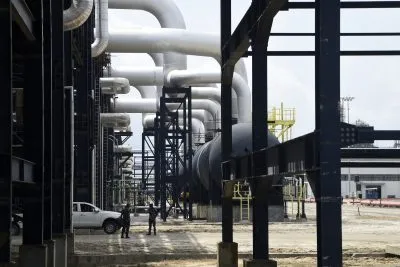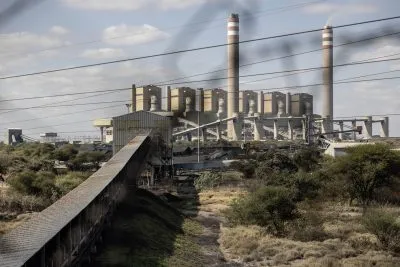International construction companies may be suffering from the economic downturn in Europe and North America but investment has never been greater in Africa. In common with any time over the past three years, the port sector continues to attract massive investment. Rising trade volumes and growing economic confidence are driving growth, while also underpinning a renaissance in road and rail construction.
Housing
There is no doubt that both the quantity and the quality of African homes need to be improved. Kigali needs 35,000 new homes a year to keep up with demand but just 1,000 a year are being built. About 80% of houses in Niger are without adequate sanitation and 70% of Tanzanians have homes that have neither been planned nor provided with basic services. Economic growth is driving residential construction but it will take decades to make a real impact on the problem.
The debate over ‘evolution’ or ‘revolution’ continues to rage in the African housing sector. Following on from similar projects in Lagos, Luanda and Nairobi, plans have been unveiled for the construction of a modern new city on the outskirts of Abuja, as part of celebrations over the 100th anniversary of the creation of Nigeria.
The Minister for the Federal Capital Territory (FCT), Bala Muhammed, revealed that the government could help to provide the land but that all construction would be funded by private sector investors. Developers will be required to commit $4bn in what is expected to be an integrated residential, office and leisure area that will house and employ tens of thousands of people.
However, success is not always guaranteed for such schemes. The New City of Kilamba, which was built in Angola by China International Trust and Investment Corporation (CITIC), is designed to house several hundred thousand people but currently has an occupancy rate of just 10%. The weak local mortgage market and the average $170,000 cost of the properties mean that very few Angolans can actually purchase such homes, apart from more prosperous citizens who already own their own houses.
Ângela de Branco Lima Mingas, the director of architecture at Angola’s Lusíada University, said: “Kilamba seems to be more of a vanity project to give Angola a chance to show off to other countries what it can build, rather than a planned response to solving social problems like housing.”
Such huge projects are unlikely to provide modern housing for the bulk of the Nigerian population, so the government is looking to encourage greater access to finance.
Shelter Afrique, a private pan-African housing institution, has reached an agreement with Abuja to provide housing finance and advice to both lenders and borrowers. President Goodluck Jonathan said: “The federal government is looking at some other angles pertaining to the funding of housing. When we think about new towns we must work with key industrialists. If you construct new towns without jobs then there would be problems.”
Elsewhere, in December, Moroccan real estate group Alliances Développement Immobilier (ADI) signed a deal with the government of Côte d’Ivoire to build 7,000 new homes in and around Abidjan, as part of Côte d’Ivoire’s National Development Plan for 2012–2015. The company generates 69% of its income from social housing projects and is now seeking to expand into sub-Saharan Africa.
Ports and airports
While the airline sector continues to limp along in most of the industrialised world, new airports are being constructed on a regular basis in Africa. Tanzania Airports Authority (TAA) is currently seeking to identify a company to develop Terminal 3 at Julius Nyerere International Airport (JNIA) in Dar es Salaam. The provision of extra capacity is partly designed to encourage the emergence of local low-cost carriers in the country.
Airport and port development is going hand in hand in KwaZulu-Natal, in South Africa. The old Durban International Airport has now been decommissioned and replaced by King Shaka International Airport in order to attract more tourists to the region and boost economic growth within KwaZulu-Natal.
The new airport, also known as La Mercy, is located about 35km north of Durban and has 3.7km of runway, with the capacity to handle 7.5m passengers a year. Airlines such as British Airways, South African Airways and Kulula operate services from the facility, which has already become the ninth biggest airport in Africa.
Dube TradePort is now being developed next to the airport to encourage businesses to make the most of the export options on offer.
After months of wrangling, the old airport and surrounding area have been given to state transport utility Transnet to develop a new container port. Transnet has failed to secure approval to expand the existing port of Durban in a variety of directions and has now opted to construct a huge new facility on the brownfield site. Construction work on Phase 1 is due to begin in 2016, with the entire project scheduled for completion in 2037. Total costs are estimated at R75bn ($8.6bn) at today’s prices.
The Minister of Public Enterprises, Malusi Gigaba, said that the scheme will “project us beyond South Africa. It’s about the future of the continent, the future of the region, how we facilitate meaningful trade in Southern Africa, how we address unemployment and lack of skills.”
Transnet envisages the construction of a 16-berth terminal with handling capacity of 9.6m TEU – or standard-sized containers – a year, which would cement Durban’s position among the 10 biggest ports in the world. By controlling the entire site from the beginning, Transnet should be able to avoid the lengthy planning process required with each expansion phase at other locations in the country.
Competition for projects
New container and dry bulk terminals are being developed across Africa, helping to ensure that the port sector is one of the most rapidly growing industries on the continent. New iron ore rail and port projects are being constructed in Sierra Leone, Gabon and Congo-Brazzaville, although political uncertainty has delayed investment in new transport infrastructure in Guinea.
Now that the Japanese government has agreed to fund the construction of a second container terminal at Mombasa, the government of Tanzania is eager to press ahead with the development of its own second terminal at Dar es Salaam.
China Communications and Construction Company (CCCC) announced in September that it would like to bid for the scheme. This could be a commercial decision but also tallies with Beijing’s policy of investing heavily in infrastructural projects in the African continent in order to promote Chinese diplomacy and secure access to raw materials. For instance, CCCC has already redeveloped the road from the port of Mombasa to Nairobi.
However, both Mombasa and Dar es Salaam could be overshadowed if the proposed new port of Lamu in Kenya is actually constructed. Construction costs on the port are estimated at $5.3bn but the associated roads, railways and other infrastructure would cost a further $18bn – a mammoth price tag by any standards.
However, Presidents Mwai Kibaki of Kenya, Salva Kiir of South Sudan and the late Meles Zenawi of Ethiopia signed an agreement on the scheme, known as the Lamu Port-Southern Sudan-Ethiopia Transport Corridor Project (Lappset), earlier this year. The managing director of the Kenya Ports Authority (KPA), Gichiri Ndua, commented: “Interested firms may form consortia or joint ventures to enable them meet the requirements of the expression of interest.”
Competition is equally as fierce in West Africa, where about a dozen ports are seeking to establish themselves as regional trans-shipment centres. The latest to enter the fray are Abidjan and Lomé. French firm CMA CGM is among the bidders for a contract to build and operate a new container terminal at Abidjan. The port has suffered from more than a decade of political instability in Côte d’Ivoire but could now be on the road to recovery. The new facility will have handling capacity of 1.5m TEU a year, almost tripling Abidjan’s total container capacity.
Further east, China Merchants Holdings (International) (CMHI) has bought a 50% stake in Thesar Maritime Ltd, which has a licence to develop and operate Lomé Container Terminal in Togo. The remaining 50% stake is held by Dutch firm Terminal Investment Ltd of the Netherlands.
The terminal will have initial handling capacity of 1.5m TEU a year, with the option of expanding it to 2.2m TEU a year at a later date.
Local input vital
Many governments are concerned that local companies are not benefiting from the construction boom. Contracts on jumbo projects are usually given to international companies with greater expertise, but domestic firms need to be able to gain expertise in order to compete.
The government of Kenya had introduced a stipulation that bidding construction consortia must be at least 30% Kenyan owned. However, the new regulations state that: “Joint ventures for construction works will be at least 30% local, except where there is an existence of an agreement between the government and the development partner.” It has been widely reported in Kenya that the change has been made to encourage investment by Chinese construction companies, which will now be able to negotiate the terms of their investment directly with the government of Kenya.
Elsewhere, all construction and engineering contracts worth less than N5bn ($31m) must be awarded to Nigerian companies or foreign firms that employ a high percentage of skilled Nigerian workers. The Nigerian Minister for Works, Mike Onolememen said that it was “a deliberate effort by the federal government to help build local capacity and promote local content in the industry” and was aimed “at reversing the domination of the Nigerian engineering and construction industry by expatriates”. He added: “Continued reliance on imported technologies and professionals to build most of Nigeria’s infrastructure such as roads, power, energy, water supply and transportation is simply not sustainable in the long run.”
Given its greater integration into the global economy, South Africa is more concerned with injecting new life into the weak construction sector than with the level of local participation. Many local firms are seeking to expand into the rest of the continent in order to compensate for the lack of opportunities at home. Graeme Jones, managing director of the construction division at Fraser Alexander, said: “The construction division tendered for several contracts in 2012, which we expect to be awarded next year. We believe this will bring about the work needed to increase the division’s revenue contribution.”
Perhaps the most difficult line to walk is that between quality and quantity. As the recent collapse of the multistorey Melcom department store in Accra demonstrates, building standards are not all they could be in many countries. Even where adequate legislation has been passed, it is important that a strong inspection regime is put in place.
Such bureaucracy is a necessary part of a healthy construction industry and should not be viewed as cumbersome red tape by either domestic or foreign investors. New homes, shops, roads and ports are certainly required across Africa but some things are more important than construction.
Want to continue reading? Subscribe today.
You've read all your free articles for this month! Subscribe now to enjoy full access to our content.
Digital Monthly
£8.00 / month
Receive full unlimited access to our articles, opinions, podcasts and more.
Digital Yearly
£70.00 / year
Our best value offer - save £26 and gain access to all of our digital content for an entire year!
 Sign in with Google
Sign in with Google 


